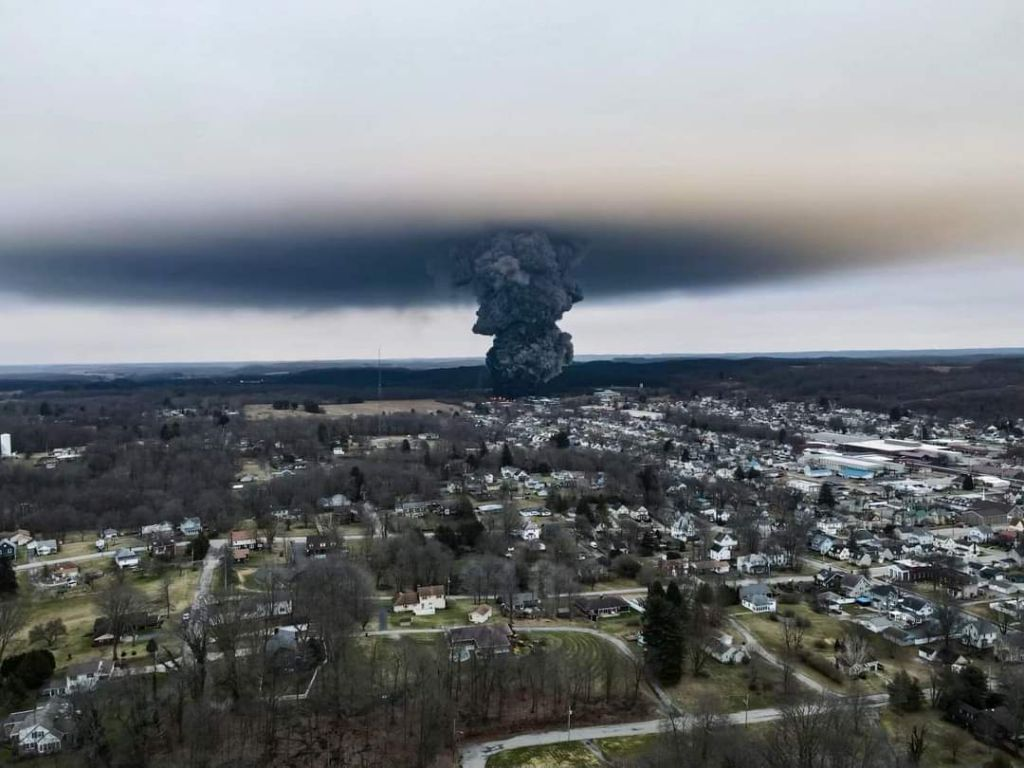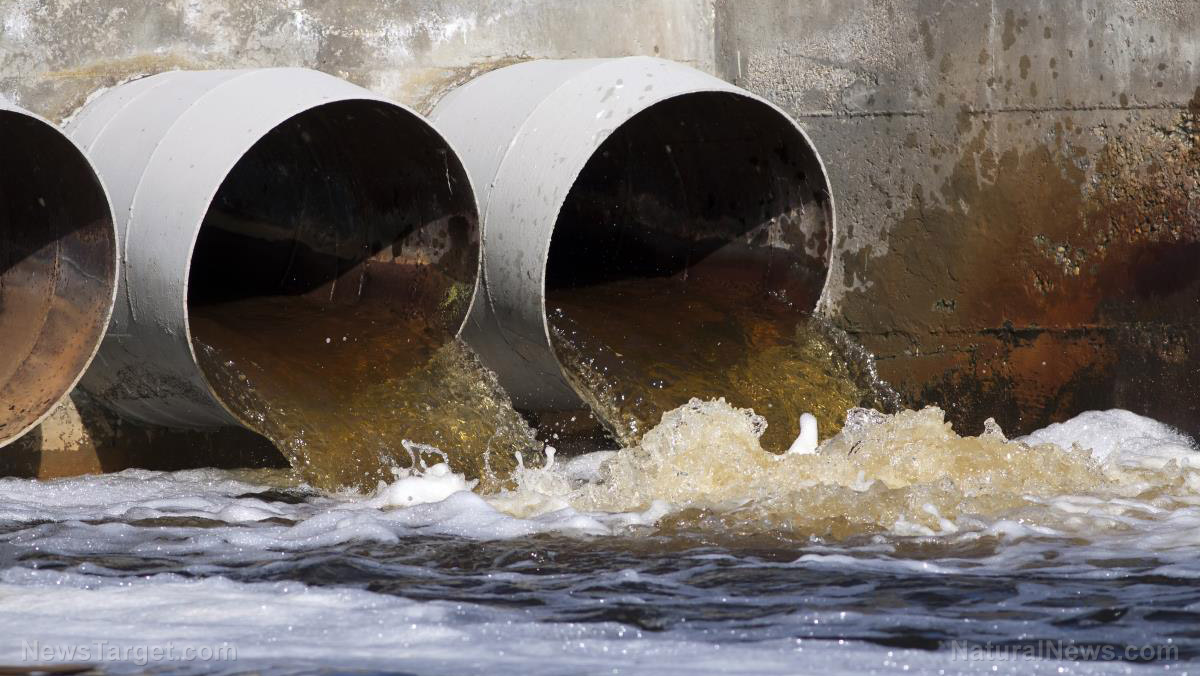CHEMICAL COVER-UP: EPA’s plan to regulate wastewater pollution DOES NOT deal with “forever chemicals”
02/14/2023 / By Zoey Sky

The Environmental Protection Agency (EPA) released last month the Effluent Guidelines Program Plan 15 for regulating wastewater pollution, including discharges of perfluoroalkyl and polyfluoroalkyl substances (PFAS) or “forever chemicals.”
However, the plan doesn’t reflect the urgent need to deal with these pollutants more quickly.
The EPA’s plan will likely take years to complete and it will delay much-needed restrictions on PFAS discharges into waterways. The plan also falls short of the agency’s vow in its 2021 PFAS Strategic Roadmap to “get upstream” of the forever chemicals problem.
According to the EPA, it will release a draft regulation for manufacturers of PFAS or those that create mixtures of PFAS by spring 2024, which is nine months later than previously scheduled. The EPA promised to do the same for metal finishers and electroplaters by the end of 2024, with a setback of six months.
The EPA’s new plan for all other industrial categories it considered for PFAS wastewater limitation guidelines includes more studies and monitoring that could possibly delay restrictions on these sources indefinitely.
Melanie Benesh, Environmental Working Group (EWG) vice president of government affairs, said that polluters were allowed to contaminate communities for too long and only aggressive action from the EPA can effectively “stop PFAS at the source.”
According to Benesh, the agency’s plan lacks the urgency these communities expect. She added that it’s also worrying that the agency’s proposed restrictions on some of the most serious PFAS polluters, such as chemical manufacturers and metal finishers, are also getting delayed, with no timeline for when those limits will be final. (Related: New research shows microplastics are even more toxic to humans than previously thought.)
Benesh did acknowledge that it’s a good thing the EPA is committed to addressing PFAS discharges from landfills since they are a source of pollution that disproportionately affects vulnerable communities.
However, it’s unclear from the agency’s plan when those limits will materialize. The EWG official cautioned that with the “glacial pace of change in the EPA’s plan,” states should take the initiative and not wait for the EPA to act on PFAS.
Industrial discharges of PFAS have already caused contamination in places like the Cape Fear River Basin in North Carolina and Parkersburg, West Virginia.
The EWG has used EPA enforcement data to identify at least 40,000 potential industrial dischargers.
According to research, even very low doses of PFAS in drinking water were linked to suppression of the immune system and an increased risk of certain cancers. Forever chemicals are also linked to adverse effects such as increased cholesterol and reproductive and developmental problems.
Why you should worry about PFAs?
PFAS are a large, complex group of manufactured chemicals that are used in a variety of common products.
These chemicals are used to keep food from sticking to cookware. PFAs are also used to make clothes and carpets resistant to stains and to create firefighting foam that is more effective.
PFAS are also used in various industries such as aerospace, construction and electronics.
Since the carbon-fluorine bond is one of the strongest, these chemicals do not break down easily in the environment, hence the name “forever chemicals.”
How are you exposed to PFAS?
Human exposure to PFAS is widespread, but they may vary by geography and occupation.
You may be exposed to these chemicals by consuming PFAS-contaminated water or food, or using products made with PFAS. It’s also possible to be exposed to these chemicals by inhaling air containing PFAS.
According to a report by the Centers for Disease Control and Prevention‘s (CDC) National Health and Nutrition Examination Survey (NHANES), PFAS was found in the blood of 97 percent of Americans.
Why should action be taken against PFAS?
Many studies suggest that multiple health effects are linked to PFAS exposure.
Concerns about the public health impact of PFAS have arisen due to:
- Widespread occurrence – Study findings have identified traces of PFAS in the blood and urine of people. Researchers are concerned and want to confirm if the chemicals can cause health problems.
- Numerous exposures – Because PFAS are used in hundreds of products around the globe, there are many opportunities for human exposure.
- Growing numbers – To date, over 9,000 PFAS have been identified.
- Persistence – Forever chemicals remain in the environment for an unknown length of time.
- Bioaccumulation – You can encounter different PFAS chemicals in different ways. Over time, you may take in more of the chemicals than you excrete, a process that leads to bioaccumulation in bodies.
Since there are many types of PFAS chemicals, which often occur in complex mixtures and in different commonly used products, scientists face challenges in studying them completely. More research can help scientists fully understand all sources of exposure and if and how they cause health problems.
Visit Pollution.news to learn more about the problem of wastewater pollution and forever chemicals.
Watch the video below to know more about PFAs contamination of drinking water.
This video is from the Weltansicht channel on Brighteon.com.
More related stories:
Study finds unsafe levels of uranium in American public water systems.
About half of US lakes, rivers are too polluted for swimming, fishing, drinking.
Scientists explain how sunscreen can cause harm to coral reefs.
Sources include:
Submit a correction >>
Tagged Under:
big government, dangerous, deception, Ecology, environment, EPA, forever chemicals, PFAS, poison, tap water, toxic ingredients, toxins, traitors, water contaminants
This article may contain statements that reflect the opinion of the author
RECENT NEWS & ARTICLES
COPYRIGHT © 2017 CLEAN WATER NEWS




















